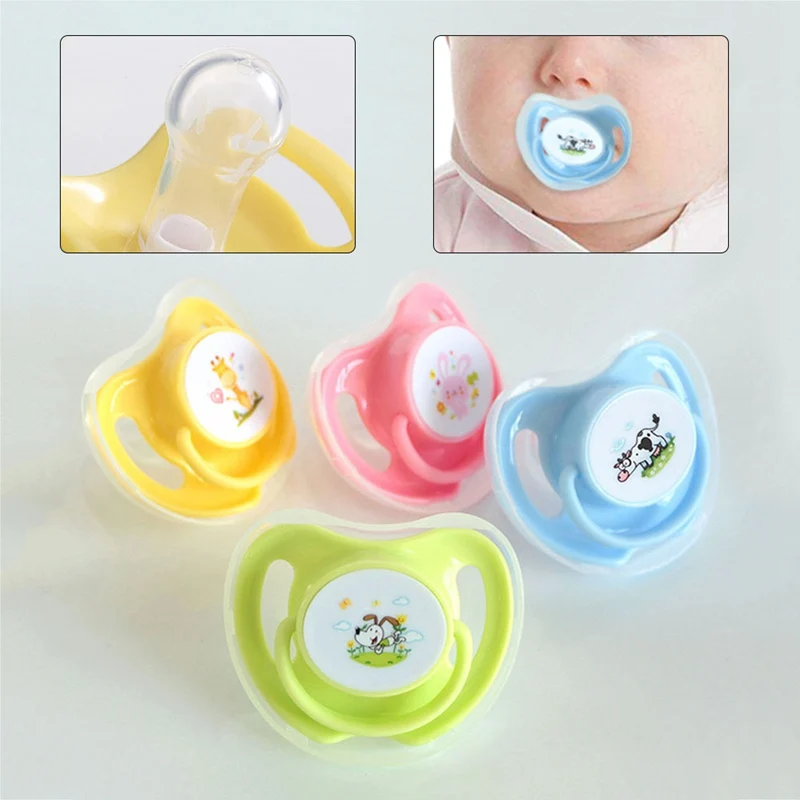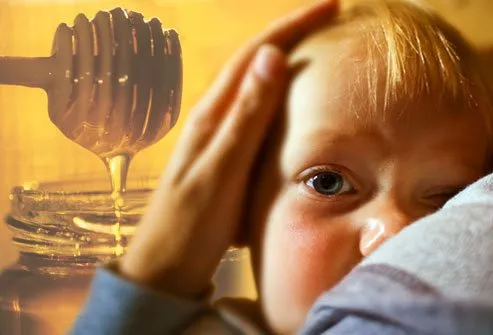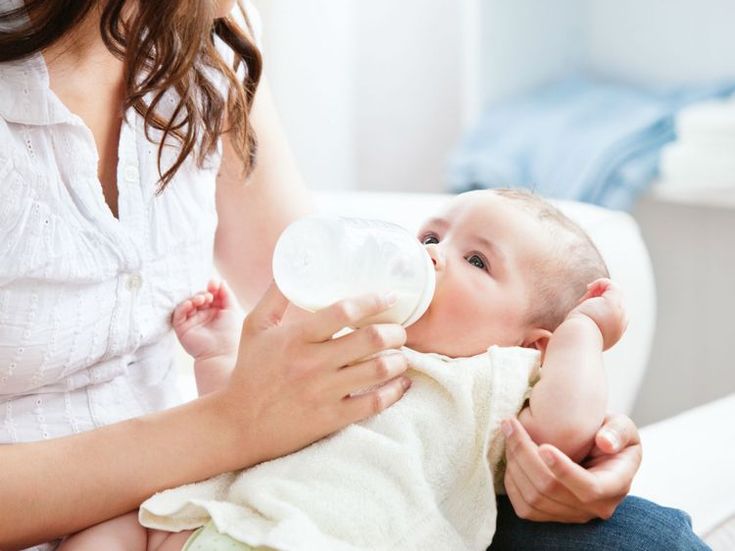Feeding baby terrapins
by Charles GrimaIf you are planning to buy a baby terrapin, do your homeworkfirst, before you buy it. I have always looked upon tortoises as being the CINDERELLAS OF THE PET WORLD, but I think the little terrapins, which we see in the pet shops, are on level terms with them. Baby terrapins are greatly misunderstood, and because of this, their life in this country is not always a happy one. I suspect that the fatality rate is very high. Pet shop owners, no doubt, do their best for them while in their care, but many people who buy them either give them the wrong care, or quickly tire of them and neglect them. Further, when in captivity, terrapins fall easy prey to disease if neglected. To care for baby terrapins properly requires patience and the will to give them plenty of attention. If cared for properly, they grow to about seven inches (18 cm.) males and twelve inches (30 cm. MORPHOLOGYA terrapins shell is flatter than that of a tortoise; this allows it to travel through water with the least resistance. The shell is composed of an outer layer of horn, and an inner layer of bone. The outer layer of horn is the protection, and is composed of a number of tough shields or scutes. The under part of the shell is known as the plastron, and the upper part as the carapace; they are joined at the sides by the bridges. If the terrapin is dropped, or is stepped on, the shell may break. The shell and the skin are very sensitive.The terrapins jaws are composed of bone, covered with hard layer of horn, which comes to a sharp edge. There are no teeth, but the hard horny jaws are very effective for biting and tearing up food. The fore legs are covered with scales, which gives them protection. This also applies to the heads when it is withdrawn into the shell behind the legs. The hind feet are webbed and are used as paddles to propel the terrapin along in the water. The terrapins tail is hollow (but does contain the tip of the back bone, of course) And contains a sac, the cloaca, which is a communal reception chamber for urine and faeces, as well as a leading to the sex organs. All urine and droppings pass through the hollow tail. OTHER CHARACTERISTICSHearing in the terrapin, as in a tortoise, is, on the whole non-existent, but it has quite good sight, but this naturally deteriorates with age. The sense of smell is keen, and is used for finding food, both on land and in the water. Terrapins can breath quite freely when on land, or in the water. On land they breath by alternately contracting two muscles in the flanks, and two in the front of the body. By this means the lungs are expanded and contracted, air being sucked and pushed out. Although this method is quite effective, it is primitive to a land mammal. In the water, the terrapin breathes by using the lining of the throat, and by using two sacs in the cloaca, which allow air to pass through them. While it is easy to sex adult terrapins, it is difficult to sex baby terrapins. In the adults the plastron is either flat or convex in the female, while it is concave in the male. Males have larger nails and are smaller in size. Terrapins like most creatures, like company, so if it is possible, keep two or more, and they will live a happier life. They live in large numbers in the wild. If a terrapin falls onto its back when on land, it can usually right itself, but if for some reason it cannot, put it on its feet immediately; otherwise it will die, as the lungs will be compressed by the intestines and other organs, preventing it from breathing. SPECIES OF TERRAPINS KEPT AS PETSSome years ago, practically all terrapins sold in pet shops were of the hardy species, coming mainly from Europe, but, for the past few years, large numbers of half-hardy terrapins from North America have been available. European species are still imported, but in a small numbers. The carapace of this species is black or brown, with yellow spots or radiating lines on the shields. The plastron is of greyish yellow colour with irregular brown patches. It is hinged between its two sections, and is joined at the side to the carapace by cartilage. The top of the head and neck are brownish black with yellow spots. There are webs on both hind and front feet. A second species of hardy terrapin some times imported is the Spanish Terrapin, (Mauremys (Cclemmys) caspica leprosa), which is found in North West Africa and the Liberian Peninsula. Young specimens of this species have a yellowish-brown carapace with orange-yellow or red patches in the middle of the shields. The plastron is yellowish, while the skin is olive-green with orange streaks or spots. By far the most common terrapin imported is the North American half-hardy Red-ear, (Trachemys (Pseudemys) scripta elegans), so called because of the red or dark orange stripe on each side, running from the eye back onto the neck. A second half-hardy subspecies some times imported from North Americas the so-called Yellow-bellied Terrapin (Tramchemys (pseudemys) scripta scripta ). It has a dark brown or black carapace, while the plastron is yellow with some black pigmentation, and there are some black marks on the outer edges. A distinctive feature is the yellow blotch on either side, which curves from behind the eye down to the chin. This subspecies is found in parts of Virginia, North Carolina, most of South Carolina, West Georgia and North Florida. FEEDING BABY TERRAPINSThe feeding and general care of both hardy and half-hardy terrapins is much the same. It must be remembered that these creatures will only feed when in the water. If at any time they find an item of food, which they like, on land, they will drag it into the water to eat it. In the wild they live mainly on live food, and, being flesh eaters (carnivores), they eat fish, tadpoles, worms, insects, etc, in fact, anything in this line, which is small enough to be eaten. They catch their food while swimming about. However, in captivity, these babies will readily eat small pieces of raw fish, beef, etc, herring and liver being especially good as part of their diet. There are also some very good commercially produced foods on the market. The pieces must be no bigger than a match head, otherwise the babies may choke. When healthy, they will eat heartily, and their diet must be varied in order that they get the essential vitamins, minerals, ect, which they need to keep them healthy. Although basically carnivores, terrapins should have, and will enjoy, a small amount of green food, such as lettuce or pond weed, about three times a week. When the terrapin is in the water, drop a few small pieces of cuttle-fish in front of it; and it should snatch them and eat them. These will provide calcium, which it needs for growth of the shell and bones. Twice a week will be sufficient. LIVING QUARTERS.The living quarters of a terrapin are very important, especially for the babies, as being too small to hibernate, they have to live in them all the year round. The vivarium should be as large as possible, allowing the terrapins to get all the suns rays and natural light. In fact, on hot, sunny days they can be put out of doors in the sun, but they must have protection in case the sun gets too hot. (Some shade), they also need to be protected from cats, which will eat them. Baby terrapins should be kept in a roomy tank, and these can be bought in pet shops (or from the club). They must be of clear glass to allow natural light to get through to the terrapins. For two baby terrapins, a tank 18 in long by 12 in wide (45cm * 30cm) will be ideal at first, but a larger tank will be necessary as the terrapins get bigger. The water in the tank for babies should be about 4 in (10cm) deep at first, but this can be deeper as the terrapins grow. One important point which many people do not realise, and unfortunately are not advised about, is that these baby terrapins require heat; a temperature of 75-80 F (23.8-26.6 c). Ideally, fish tank heaters can be used, and, when providing heat, I always provide two heaters, so that if one fails, the other will provide some heat until the fault is rectified (e.g. 2*50w instead of 1 * 100w). Another essential is an island onto which the terrapins can climb easily, as they do come out of the water to dry themselves. BUYING A TERRAPINWhen buying a terrapin you will, naturally, want to choose a healthy one. There are a few points, which will help you do this. The eyes should be clean and bright, and should be free of discharge. They should open and close freely. The mouth should also be clean, should open and close freely. Failure to this may mean some injury to the jaw, or diseases of the mouth. It is also an idea to handle a few terrapins for weight, choosing the heaviest. A healthy creature should be lively, and should move its head and limbs freely, withdrawing them when touched, taking into consideration the surrounding temperature (terrapins become lethargic in cold conditions). Any responsible pet shop owner would appreciate your pointing out any creature, which is injured or appears unwell, for, if diseased, it could affect the whole stock. COMMON AILMENTSTerrapins kept in captivity can suffer from various ailments, due, in many cases, to incorrect feeding, or too foul water. I will describe the most important ailments, but I must emphasise the importance of getting veterinary treatment early, as with these creatures, their condition deteriorates quickly when ill or injured. One common complaint is softening of the shell, due to a lack of calcium. In its early stages this is treatable if caught in time. If a terrapin with soft shell refuses food, take it for veterinary advice immediately, but if it is still feeding, offer it small bits of cuttle-fish and cod liver oil mixed with its food. Blindness and deformities can also occur through lack of sunshine and vitamins (this is why sunshine and vitamins are essential, of course, Vitamins A and D being necessary to correct these conditions). Again veterinary advice is needed. Cod liver oil can be given by mouth if the terrapin is feeding, as this contains the necessary vitamins. If the water in the tank becomes fouled, the terrapin could develop a mouth infection. This will be recognised by a reluctance to feed, a dirty mouth inside, with the mouth probably being partly open, as well as giving off a nasty smell. Such a terrapin should be isolated and veterinary advice sought, as this condition is sometimes infectious. Any other problems such as cuts, cracked shells, swellings, signs of worms or blood in the droppings must be dealt with by a veterinary surgeon as quickly as possible. These little creatures deserve decent care. It is to be hoped that, with much wide publicity and advice on their care, their lives may become much happier than is sometimes the case-free from the ailments, which many of them suffer and die from Donated by the Malta Aquarist Society Club visit MAS club website |
What Do Baby Turtles Eat in the Wild and As Pets?
Slow-going turtles that live in an aquarium and can be just as fun to watch as cats and dogs.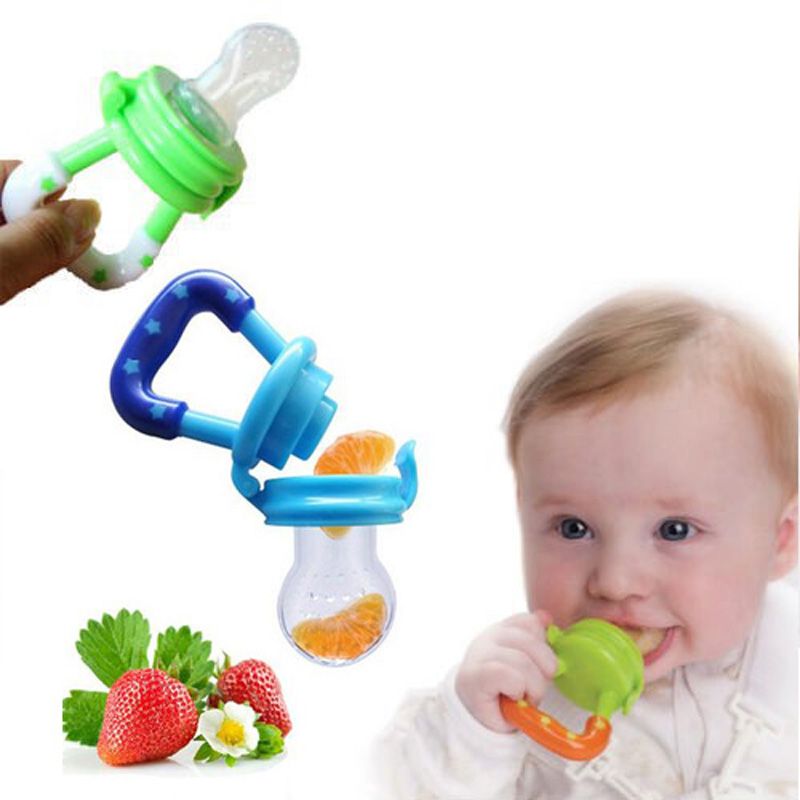 Like most reptiles, they are fairly easy to maintain. They live for a long time, especially when you feed them right.
Like most reptiles, they are fairly easy to maintain. They live for a long time, especially when you feed them right.
As a turtle mom or dad, you may want to make sure your baby turtle is eating the right kinds of food, or feed them a diet as similar to a wild turtle as possible. We’re going to cover what baby and adult turtles eat in the wild and also what you can feed them as pets, depending on your preferences.
What Wild Turtles Eat
Image Credit: Nature_Blossom, PixabayTurtles are found on every continent in the world except Antarctica. You will likely spot a turtle along the bank of a small pond, stream, or lake. They love damp areas with lots of rocks or spaces they can hide. This means that they like to eat things you can find in these areas.
Wild turtles eat a variety of things in nature. When they are babies, they mostly eat meat because they need the protein to keep growing. Types of protein they like to eat include small insects, snails, worms, and fish. When they get bigger, they can start eating more and more plant-like substances.
When they get bigger, they can start eating more and more plant-like substances.
What Pet Turtles Eat
What your pet turtle needs for nutrition depends on the species and age of your turtle.
Omnivorous vs Carnivorous vs Herbivorious TurtlesThere are three kinds of turtles; carnivorous turtles are rarer and eat only meat, omnivorous turtles are more common and eat meat and vegetation, and herbivorous turtles eat only vegetation. Box turtles, Mississippi maps, and red-eared sliders are omnivorous and common pet turtle breeds. Musk turtles are carnivorous.
What Do Adult Pet Turtles Eat?
Image Credit: SeaReeds, PixabayJust like in the wild, a turtle’s diet needs to change as they age. It’s important to know how old (approximately) your turtle is so you know what to feed him.
Pet turtles that are mature and omnivorous can eat pelleted food specifically made for turtles. You can find this kind of food at most pet stores. Again, check the species to make sure you are giving your turtle the right diet.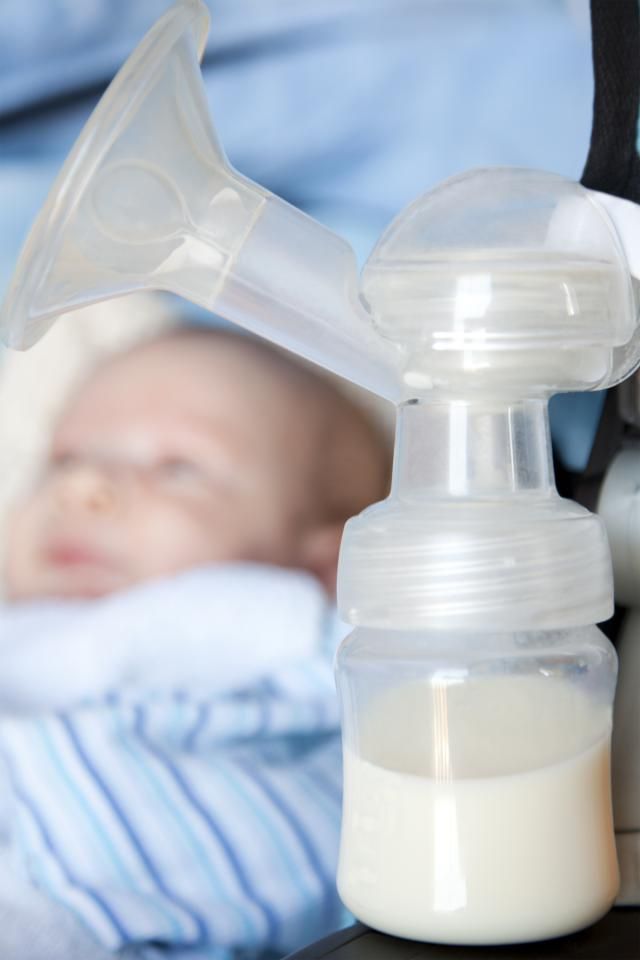
Most turtles do well on pellet food containing between 40-45% protein and 6-8% percent fat. The moisture content counts too: the higher moisture content in the food, usually the higher percentage of protein and fat inside the food. Look for “fish meal” towards the top of the ingredients list.
Turtle-specific pellets should make up at least 25% of your turtle’s diet. It’s important to get food specific for turtles as it stays intact more easily when it contacts water, and it also floats.
The rest of your turtle’s diet should be 25% from a protein source, like a comet goldfish, which also provides essential nutrients like calcium and phosphorus.
The final 50% can be made up of fruits and vegetables. Vegetables should be rich with colors, such as dark, leafy greens, shredded squash, and carrots. You could also opt to feed your turtle aquatic plants like duckweed.
Occasionally you can offer meat, but this is not always beneficial. Turtles benefit most from the nutrient livers of feeder fish, and won’t get much of what they need from the kind of meat we normally eat.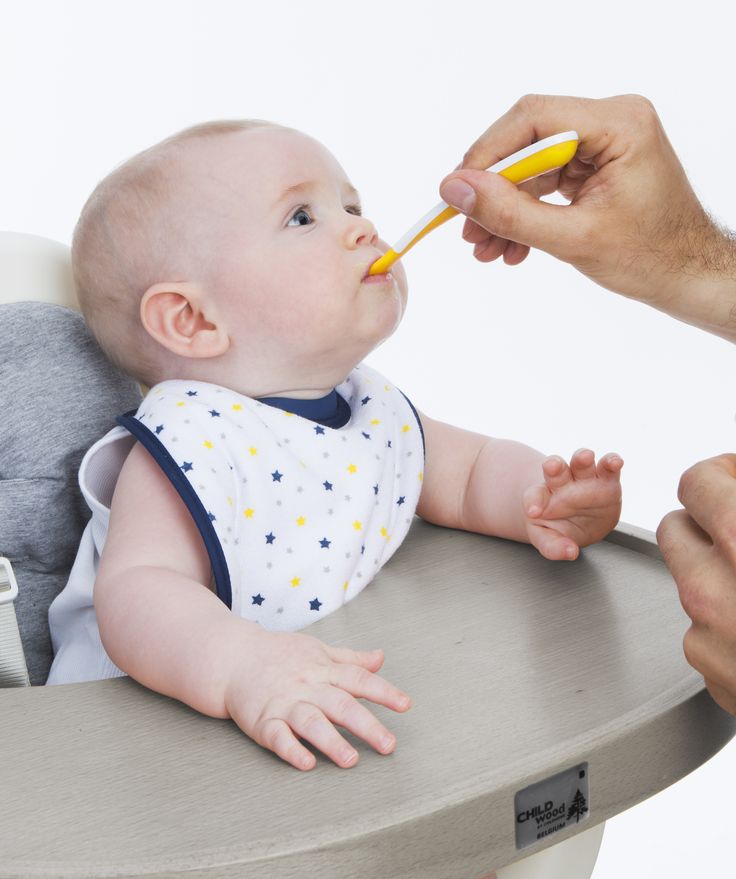
Herbivorous turtles, like land turtles or tortoises, can be fed only fruits and vegetables. Aim for 20% fruits and 80% vegetables total.
Related Read: 10 Best Turtle Foods 2021 – Reviews & Top Picks
What Baby Pet Turtles Eat
Image Credit: PixabayBaby turtles in the wild eat from different food sources sometimes because they are growing. In general, you should feed a baby turtle a little more protein than you would an adult turtle. You can replace some fruits and veggies with a little more pellets and feeder fish if your turtle is still growing.
Pellets are a great option here, but you could opt to feed him live food instead. Baby turtles can eat the same kinds of proteins adults can: earthworms, snails, slugs, grasshoppers, beetles, and crayfish. Ask your local pet store if they have live food for reptiles, and this is where you can buy it.
One thing you might want to consider adding to your pet baby turtle’s diet is a gel capsule supplement. You can find these at most pet stores. Just make sure the label indicates that it’s for your specific breed of turtle.
You can find these at most pet stores. Just make sure the label indicates that it’s for your specific breed of turtle.
Ultimately, you want to make sure what you feed your baby turtle has variety. That way, you know he is getting all the nutrients and vitamins he needs.
Is It Okay to Keep a Wild Turtle?
Generally, no. For one, turtles in nature are wild animals. They are not used to human interaction, and will therefore not make very good pets. Wild turtles could carry diseases that captive-bred turtles don’t have (though both can carry some, which is why you should always wash your hands after handling). Lastly, some states ban captivating wild turtles. It’s frowned upon by conservationists, as well. These are all the reasons it’s not a good idea to keep a wild turtle.
- Here’s another interesting read about turtles: 17 Turtles Found in Illinois
Baby Turtle Care Tips
Image Credit: PixabayFeed them in a separate aquarium to keep your main habitat clean. Alternatively, you can sprinkle pellet food on top of their water. Whatever you feed them, make sure it’s shredded into small pieces to make it the easiest to eat.
Alternatively, you can sprinkle pellet food on top of their water. Whatever you feed them, make sure it’s shredded into small pieces to make it the easiest to eat.
Turtles eat every day when they are young. Once they are about 7 years old, you can feed them once every 2 days. They can be fed 1 cup of turtle food per day, or whatever amount they can eat in around 20 minutes.
Never feed your turtle cat or dog food, as the protein content is too high and could harm your turtle.
- Here’s another topic of interest: Can Turtles Eat Chicken? What You Need to Know!
Baby turtle’s diet needs differ slightly from adult turtles, just like in the wild. They require a little more protein and rely more on essential nutrients than full-grown adults, and that’s about the only difference. When it comes to feeding a baby turtle a pellet diet or live food, the choice is up to you.
Looking for more information on turtles? Take a look at:
- How To Take Care Of A Turtle Egg: A Beginner’s Guide (with Pictures)
- Do Turtles Need a Heat Lamp at Night? Lighting Guide For Your Pet Turtle
- How Many Babies Do Turtles Have? How Many Eggs Do They Lay?
Featured Image Credit: Gauthier Pous, Pixabay
Feeding - Turtles.
In nature, turtles themselves choose the right food for them in accordance with the place and region of habitat. Their diet includes both plant and animal food in different proportions, as well as minerals. At home, the owner of the turtle should provide proper nutrition, and the food should be as close to natural as possible.
Turtles are divided into approximately 3 food groups, as listed below. Each group corresponds to a certain ratio of plant and animal food, which must be given. Constant feeding of turtles with inappropriate food for a given species (for example, giving Central Asian turtles meat or feeding bog turtles only grass) is fraught with problems with digestion, metabolism and internal organs. Turtles also need to be given weekly VITAMINS and CALCIUM.
!!! Small aquatic red-eared turtles up to 300g are recommended to be fed only with Reptomin, Sera raffy P, Sera carnivor professional, river fish ground into minced meat with entrails and bones, a mixture of fish and feed. As an addition to the diet: aquarium and land snails, food insects (not dried).
As an addition to the diet: aquarium and land snails, food insects (not dried).
-
Carnivores . These are almost all completely aquatic and all young aquatic species: trionics, young red-eared, marsh, caiman, musky, etc. With age, some of them become omnivores.
Predatory turtles are fed with food insects, molluscs, fish, seafood, dry food ... More → -
Omnivorous are some adult aquatic turtles, secondary terrestrial turtles (adult red-eared, adult marsh, forest land turtles). The diet of omnivorous turtles is about half animal food and half plant food. In these turtles, the upper and lower intestines are approximately the same length.
-
Herbivores . Land turtles of the genera Geochelone, Testudo, Gopgherus, Agrionemys (including Central Asian, Egyptian, radiant, star-shaped, Greek, flat, spider, etc.). They have a longer large intestine, which is designed to digest fibrous grasses.
 Herbivorous turtles are fed natural, dried or frozen (depending on the season) plants from the edible list. Occasionally, they can be given some vegetables and very little fruit (only those species that eat fruit in nature). Read more →
Herbivorous turtles are fed natural, dried or frozen (depending on the season) plants from the edible list. Occasionally, they can be given some vegetables and very little fruit (only those species that eat fruit in nature). Read more →
Some of the herbivorous tortoises (for example, red-footed and Galapagos) can be given a snail, a mouse, or immobilized food insects once a month, but only those species that are described in the description that they can be given occasional animal food.
What are the most common mistakes turtle owners make?
- They give animal food to land herbivorous turtles, and only vegetable food to predatory aquatic turtles.
- Feeding turtles too often or too infrequently leads to obesity and abnormal body and shell growth or malnutrition and death.
- Vitamins and calcium are not given to turtles, as a result of which the turtles often have broken limbs, beriberi and crooked shells.

- They feed aquatic turtles exclusively with gammarus, bloodworms, or only one type of food, which in no case can be considered the main food
Hunger strike
summer hibernation, they are active only 3 months a year. Aquatic turtles may not eat for 6-7 months until it causes irreparable changes, also due in part to hibernation.Answers to the basic questions that arise when feeding turtles: food size, amount, temperature, what food to give, where to feed, top dressing.
Food size
Depending on the size of the reptile, the food should be finely, medium or coarsely chopped. The size of one piece should be less than half the turtle's head. Aquatic turtles break large pieces with sharp claws, so they can be given larger food. Lettuce and weeds can not be cut.
Read more...
Both aquatic and secondarily terrestrial turtles (species that live in moist forests near water bodies) are predatory. The most important rule when feeding turtles is to feed different types of food, not the same food (with the exception of balanced dry food, for example, Sera Carnivor, Tetra Reptomin). In nature, the main diet of turtles are mainly insects and various small amphibians, worms, snails, and small fish. Below in the article will be discussed about all the food options for predatory turtles.
The most important rule when feeding turtles is to feed different types of food, not the same food (with the exception of balanced dry food, for example, Sera Carnivor, Tetra Reptomin). In nature, the main diet of turtles are mainly insects and various small amphibians, worms, snails, and small fish. Below in the article will be discussed about all the food options for predatory turtles.
Read more ...
- Other articles:
- Fat and usefulness of Pisces
- Gammarus
- Moth
- fodder
- Worms Rain
- Mice
- Mauchea
- )
- Video:
https://www.youtube.com/watch?v=QxgEw40OdMg
When purchasing a turtle, many are faced with the question of what to feed a land herbivorous turtle. Someone buys cabbage, someone buys dry food, and someone goes to the turtle.ru website and reads about how to properly feed turtles so that it does not harm their health.
The main food for any herbivorous turtles are various weeds . In summer, they can be collected on the street in the forest-park area and dried / frozen for the winter. This is an affordable, free food rich in vitamin A. You need to collect plants away from the road, because. otherwise, they may contain heavy metal salts and chemicals. Mammalian worms are not dangerous to turtles. In the absence of the possibility of collecting weeds, they are replaced with salads (but only as part of the diet).
Read more ...
- Other articles:
- How to dry herbs for the winter
- Freezing of herbs for the winter
- Growing fodder plants at home
- How cannot be fed turtles
- Dry turtle
- Vitamins for turtles for turtles
- Calcium for turtles
- Video:
https://www.youtube.com/watch?v=pvRzxRDMejk
rarely. Below is a list of such products. If a certain product is not on the list of edible (for predatory turtles, for herbivorous turtles) and is not on the list of prohibited items (in this article), then it is better NOT to give it.
The main rule of feeding turtles is that the food should be close to that which the turtle constantly eats in nature. This means that if the turtle cannot get bread, milk, eggs, sausages, cat food, then they should not be given. If mangoes, papaya and kiwi do not grow in the turtle's habitat, then they should not be given either. Improper feeding of turtles leads to obesity (and as a result - curvature of the shell), problems with the gastrointestinal tract, food poisoning.
Read more...
- Video:
https://www.youtube.com/watch?v=6Se5XN59e5U
Turtles need calcium for the formation of the shell and bones of the body. As a result, due to a lack of calcium, the turtle shell becomes crooked, bumpy, claws are bent, limb fractures occur, and in the most advanced cases, the shell simply falls apart or becomes "cardboard". In nature, turtles find sources of calcium in the form of limestone, dolomite, oyster shells, corals, and animal bones. In a terrarium, turtles need to be provided with calcium, and the best option for this is ready-made calcium powder for reptiles. In addition to calcium, turtles need to be given powdered reptile vitamins.
In addition to calcium, turtles need to be given powdered reptile vitamins.
Read more ...
- Other articles:
- Vitamins for turtles
- Ultraviolet lamps for reptiles
- Dry feed for water turtles
- Dry turtles
- Feeding water tumors on the forum of dry turtles on the forum of dry charm forum
- Video:
https://www.youtube.com/watch?v=2zdstUM66nY
In nature, turtles get the vitamins they need with their food. At home, it is very difficult for turtles to provide all the variety of what they eat in nature, so you have to give special vitamin supplements. Turtles must receive a full range of vitamins (A, D3, E, etc.) and minerals (calcium, etc.), otherwise they develop a whole range of diseases that can cause illness and even death. Commercial supplements of calcium and vitamins are usually produced separately, and both should be given in small quantities along with food once a week.
Read more . ..
..
- Other articles:
- Calcium for turtles
- Dry feed for water turtles
- Dry feed for land turtles
- Feeding for the forum
- Feeding of ground turtles at the forum 9009 9009 :
https://www.youtube.com/watch?v=2zdstUM66nY
We recommend not using any dry industrial food for aquatic turtles as the main food, but only as Supplement to natural feed (fish, insects, snails, worms). Although some feeds are positioned as complete feeds by manufacturers, not every feed can boast of a balanced composition, where there is everything necessary for turtles (animals, plant components, vitamins and calcium in the right quantities). Some types of food (food based on dry fish, shrimp, insects, gammarus) can only be given as a treat to adult turtles no more than once a week.
What you need to pay attention to when buying food for young aquatic turtles: it should not contain or should contain very little gammarus (turtles do not absorb it well) and there should be more animal content (fish, mussels, mollusks) than vegetable.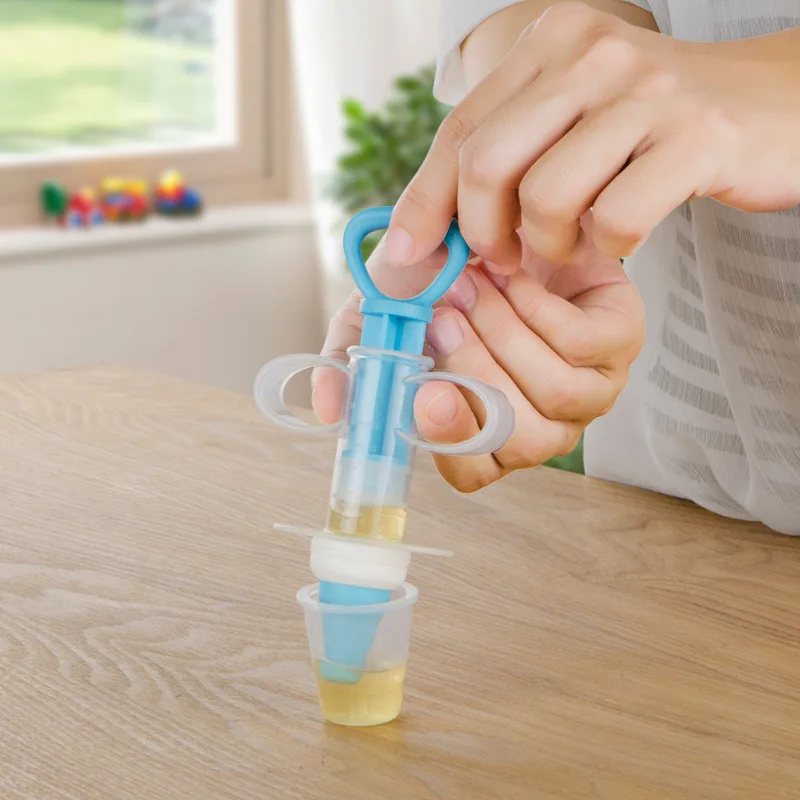 Gammarus in young turtles leads to tympania.
Gammarus in young turtles leads to tympania.
Read more...
Dry industrial food for tortoises can only be used as an additional food source , that is, it should be given no more than once a week. The rest of the diet should be weeds, fodder plants, salads, vegetables (minimum). In addition, many tortoises refuse dry food, both dry and soaked.
Below you can find a list of our most popular commercial tortoise foods:
Read more...
To properly feed turtles, you need to learn what they eat in nature. Even the diets of different species of land turtles vary greatly depending on their habitats. So, for example, steppe turtles eat more succulents and steppe plants in nature, but radiant and star-shaped turtles eat vegetables, fruits, and flowers more often. Aquatic turtles do not often eat fish, more often they are content with insects, snails, tadpoles.
The diet below is recommended by many turtle owners, but is not mandatory.
Read more ...
Read more ...
Read more ...
Read more ...
Read more ...
more ...
- Other articles:
- Aquatic and semi-aquatic plants
- Trees, shrubs
- Wild flowers
- Fruits and vegetables
- Cacti, succulents, herbs
- Video:
https://www.youtube.com/watch?v=48tSWjP3b-g
Hatching and care of baby turtles - Turtles.ru
Before hatching, turtles cut the egg shell from the inside with the egg tooth, which is located between the outer nostril and the upper jaw. It disappears within a few hours or the first days of the life of little turtles.
After hatching from eggs, young turtles do not leave the holes where the eggs were laid for a long period. From the movement of turtles in the ground, small chambers are formed in which they sit. Do not try to help the animals leave the egg. Usually baby turtles spend 1 to 3 days inside a broken or cracked shell. If during this period the turtle has not hatched, it needs help. A tortoise needs help when it cannot make a full cut or makes one in the wall of an egg facing the ground or where another egg is attached.
Usually baby turtles spend 1 to 3 days inside a broken or cracked shell. If during this period the turtle has not hatched, it needs help. A tortoise needs help when it cannot make a full cut or makes one in the wall of an egg facing the ground or where another egg is attached.
At first, a bright yellow yolk sac can be seen at the bottom of the shell. No need to try to remove it, it will resolve itself within 2-5 days, and damage to it can kill the newborn. At the place of attachment of the bag, for some time it will be possible to see a gap in the plastron. It will grow later. The yolk sac is usually the size of a pea or, in some turtles, the size of a cherry. All turtles after hatching have a transverse fold on the plastron, associated with the position of the turtle in the egg, which also disappears after a few days.
An unusually long stay of turtles without food is obviously due to the exceptionally large amount of reserve yolk. Turtles that hatch without taking any food grow and gain
weight within 2/2-3 months and can live without food for the rest of the summer and all winter.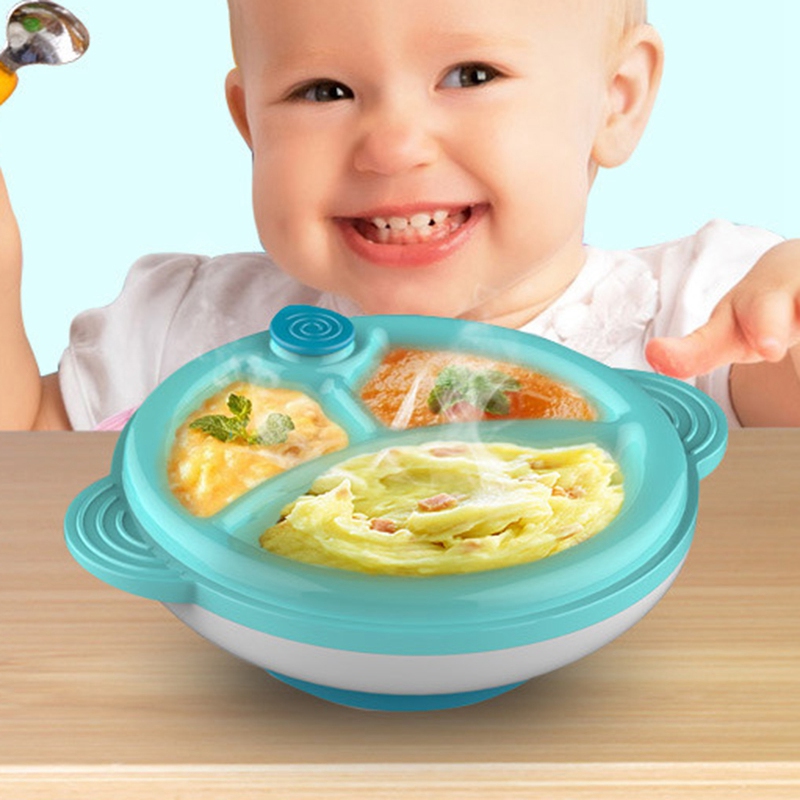 Some species of turtles remain overwintering without getting outside until the next spring.
Some species of turtles remain overwintering without getting outside until the next spring.
To prevent turtles from accidentally damaging the remains of the yolk sac when they leave the shell, it is recommended to gently wash the sac with Betadine solution and carefully bandage it with a soft cloth to the shell of the turtle. Remove the napkin after complete resorption of the bag.
After hatching, all turtles have a transverse fold on the plastron, associated with the position of the turtle in the egg, which also disappears after a few days. Often, turtles lie crosswise in their eggs, in a folded state, and therefore straighten their shell in the first four hours after birth. Turtles are born round in the shape of an egg.
In addition, newborn turtles carry a yolk sac on their belly and often spend up to six months in hibernation, coming to the surface only in the next spring after birth. From birth, they must take care of themselves. And from birth, they look the same as adults, they do not have a larval stage of development. The growth of turtles occurs throughout life, only gradually slowing down.
The growth of turtles occurs throughout life, only gradually slowing down.
Turtles from the same clutch may differ in size. In one egg, there can be two small twin turtles at once, in which case they are smaller and weaker than single turtles. To separate the twins, it is necessary to bandage their umbilical cord, which connects them with a thread. Then it will dry up and the turtles will separate themselves.
20% of newborn turtles have shell anomalies such as extra scutes.
On turtle farms, before transferring turtles from basins to enclosures, they are flooded with water for at least half an hour. And the kids, instead of trying to get out of it, put their heads under the water and sit like that for a while, absorbing moisture. In the enclosures, babies also continue to be moistened, but once every 3-4 days, and after a while they stop doing this.
For baby turtles
Newborn turtles are gentle creatures. They don't know how to swim yet, and they'll have to learn that. To keep 10-20 baby turtles, you will need an aquarium with a capacity of about 100 liters, filled with a thin layer of water. Coastlines are a must. Water should be warm 26-30 C, clean. In the absence of a filter, it must be completely replaced with settled fresh water of the same temperature every 1-2 days. Newborn turtles are very sensitive to polluted water and are more prone to eye infections than adults. As soon as the turtles get comfortable in the aquarium, you can start feeding them a variety of animal food (daphnia, gammarus, bloodworm, coretra). Food should be as varied as possible. When rearing young turtles, it is imperative to use a reptile UV lamp (5% UVB).
To keep 10-20 baby turtles, you will need an aquarium with a capacity of about 100 liters, filled with a thin layer of water. Coastlines are a must. Water should be warm 26-30 C, clean. In the absence of a filter, it must be completely replaced with settled fresh water of the same temperature every 1-2 days. Newborn turtles are very sensitive to polluted water and are more prone to eye infections than adults. As soon as the turtles get comfortable in the aquarium, you can start feeding them a variety of animal food (daphnia, gammarus, bloodworm, coretra). Food should be as varied as possible. When rearing young turtles, it is imperative to use a reptile UV lamp (5% UVB).
For tortoises
Newborn tortoises are kept at the same temperature as adults. At the bottom of a small aquarium or terrarium, you need to pour soil suitable for this species (sawdust, peat, gravel), you definitely need a drinker.
Feed babies a variety of plant foods. It is important that it is sufficiently soft and nutritious.![]()
Turtles should be irradiated with an ultraviolet reptile lamp (10% UVB) and supplemented with calcium.
INFANTS of all terrestrial species should bathe every day for the first few months of life. It doesn't take much effort, but it can save their lives. They should bathe under your supervision in a tub of warm, shallow water. The water temperature should be 29.4-35 degrees and bath time 15-30 minutes. If the climate of your region is very dry, then it is advisable to carry out this procedure twice a day.
Baby turtles can start eating the feces of adult turtles. It is believed that in this way the intestinal microflora is created in turtles. But this carries the risk of infection of young animals with infections. Therefore, it is better to keep babies separate from adults and prevent the feces of other turtles from getting into the terrarium with the little ones.
Feed very carefully, according to the principle "it is better to underfeed than to overfeed", observing the frequency of feeding in the first months, for example every other day, and by six months it can be changed to once every three days. In the first weeks of life, you can feed daily. Toddlers quickly overfeed and begin to grow crooked. "Kids need to eat a lot" is not about turtles. On hungry days, if you experience psychological discomfort, because your pet is fasting, you can put an armful of hay or dried grass, do not overfeed the turtle with coarse fiber. Properly chosen frequency of nutrition, ultraviolet, temperature, humidity and soil are the most important aspects for growing baby turtles, because their future life depends on it.
In the first weeks of life, you can feed daily. Toddlers quickly overfeed and begin to grow crooked. "Kids need to eat a lot" is not about turtles. On hungry days, if you experience psychological discomfort, because your pet is fasting, you can put an armful of hay or dried grass, do not overfeed the turtle with coarse fiber. Properly chosen frequency of nutrition, ultraviolet, temperature, humidity and soil are the most important aspects for growing baby turtles, because their future life depends on it.
It is important to monitor the correct growth of the young. Abundant protein food, vegetable food poor in fibers, lack of light and heat, lack of calcium, can lead to a rapidly growing, bumpy carapace and the formation of depressions between the horny plates. Such shells do not exist in nature.
The growth of turtles can be seen by the first light seams between the carapace scutes. As young turtles grow, their body shape and shell color change. The shell is elongated and darkens.

 In some species the fore feet are partly webbed.
In some species the fore feet are partly webbed.
 One is the so-called European Pond Turtle (Emys orbicularis), a species that is found in North West Africa, Southern Europe to West Asia, and in parts of Holland, Germany, Poland and Lithuania.
One is the so-called European Pond Turtle (Emys orbicularis), a species that is found in North West Africa, Southern Europe to West Asia, and in parts of Holland, Germany, Poland and Lithuania.  The head and limbs have a background colour of brown or olive-green with yellow stripes. Its carapace is dark green, while the plastron is yellowish with black markings. It is often referred to as the Elegant Terrapin. This species is found in Northern Illinois and Indiana, and westward through South West Iowa, most of Oklahoma and the Eastern half of Texas. It is also found in most of Missouri, Eastern and Southern Kansas, Western halves of Kentucky and Tennessee to North Alabama and Southern Louisiana. (and in Zabbar)!!!
The head and limbs have a background colour of brown or olive-green with yellow stripes. Its carapace is dark green, while the plastron is yellowish with black markings. It is often referred to as the Elegant Terrapin. This species is found in Northern Illinois and Indiana, and westward through South West Iowa, most of Oklahoma and the Eastern half of Texas. It is also found in most of Missouri, Eastern and Southern Kansas, Western halves of Kentucky and Tennessee to North Alabama and Southern Louisiana. (and in Zabbar)!!! 
 Offer them daily, and a drop of cod liver oil to each feed. They will not eat in the cold, or in the dark.
Offer them daily, and a drop of cod liver oil to each feed. They will not eat in the cold, or in the dark. 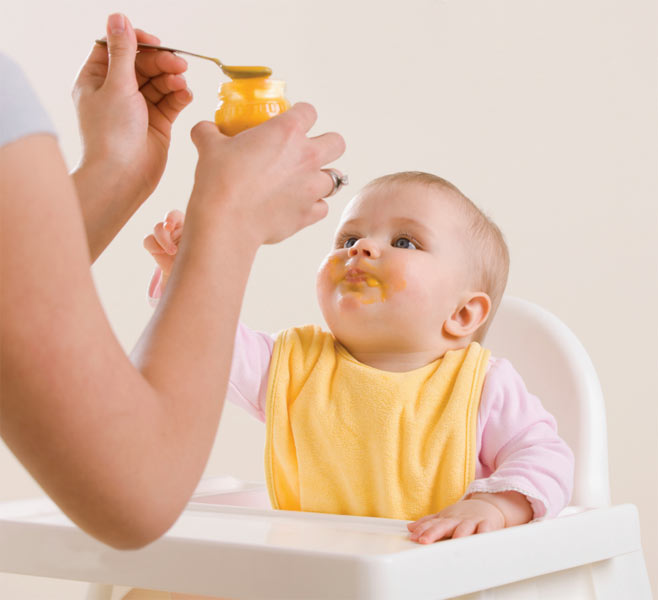
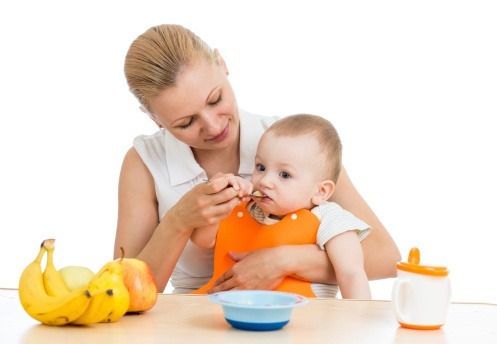 The top of the island must be clear of the water. A flat stone or piece of weathered brick will be ideal, but it should not take up too much space. When dealing with terrapins you should keep in mind that they foul the water after each feed, so this means that to have a clean aquarium a filter should be installed.
The top of the island must be clear of the water. A flat stone or piece of weathered brick will be ideal, but it should not take up too much space. When dealing with terrapins you should keep in mind that they foul the water after each feed, so this means that to have a clean aquarium a filter should be installed.  The shell should be clean and free of cracks, as should be the skin. On putting pressure to the protruding feet, a healthy terrapin should either push against you or withdraw them quickly.
The shell should be clean and free of cracks, as should be the skin. On putting pressure to the protruding feet, a healthy terrapin should either push against you or withdraw them quickly.  In these cases the shell feels rubbery.
In these cases the shell feels rubbery. 


